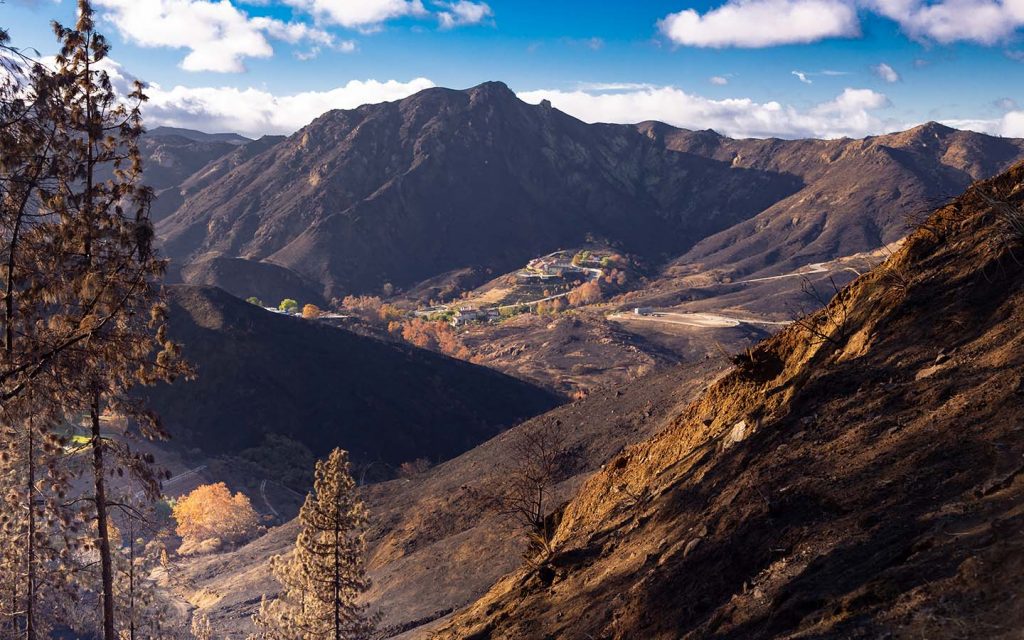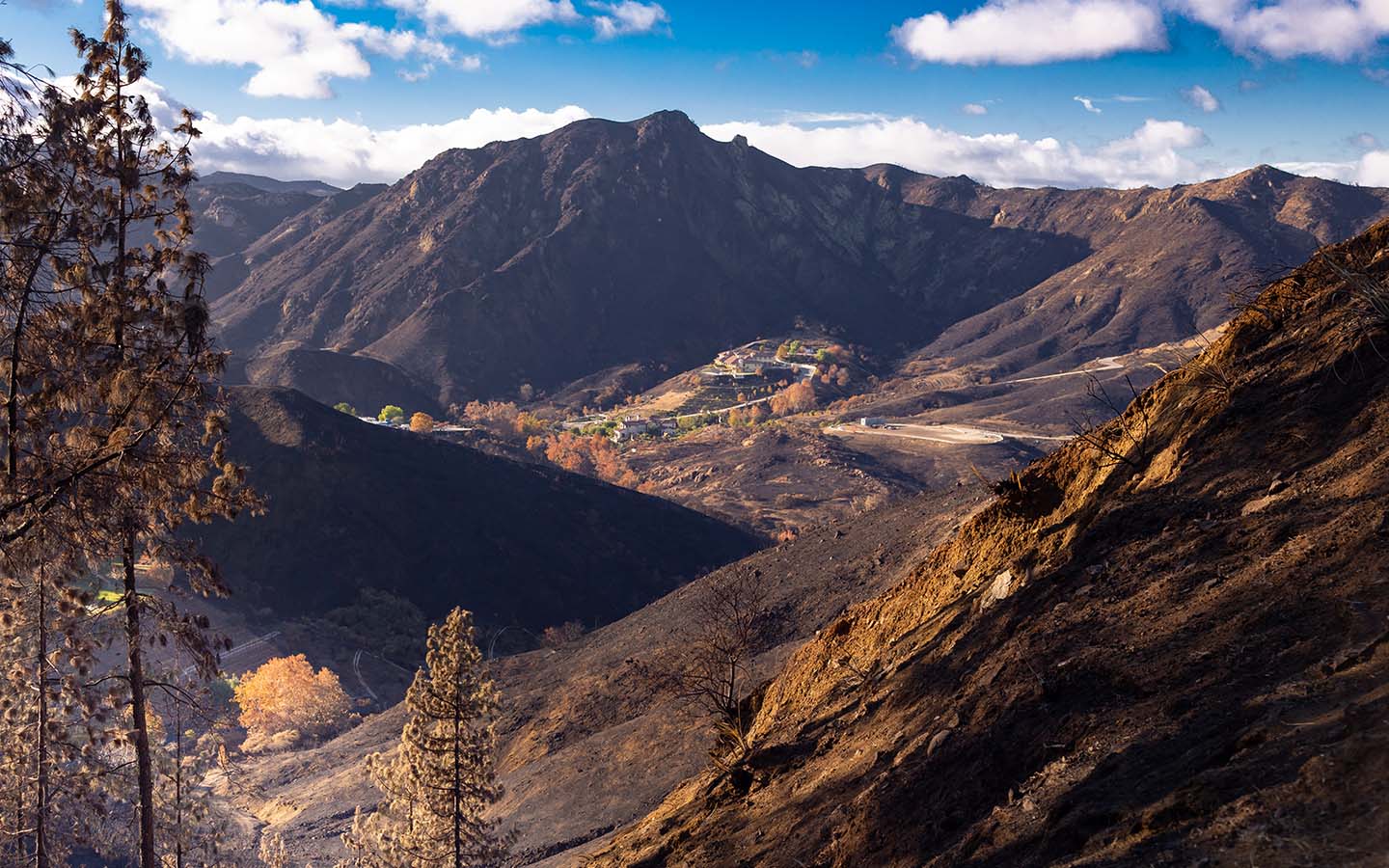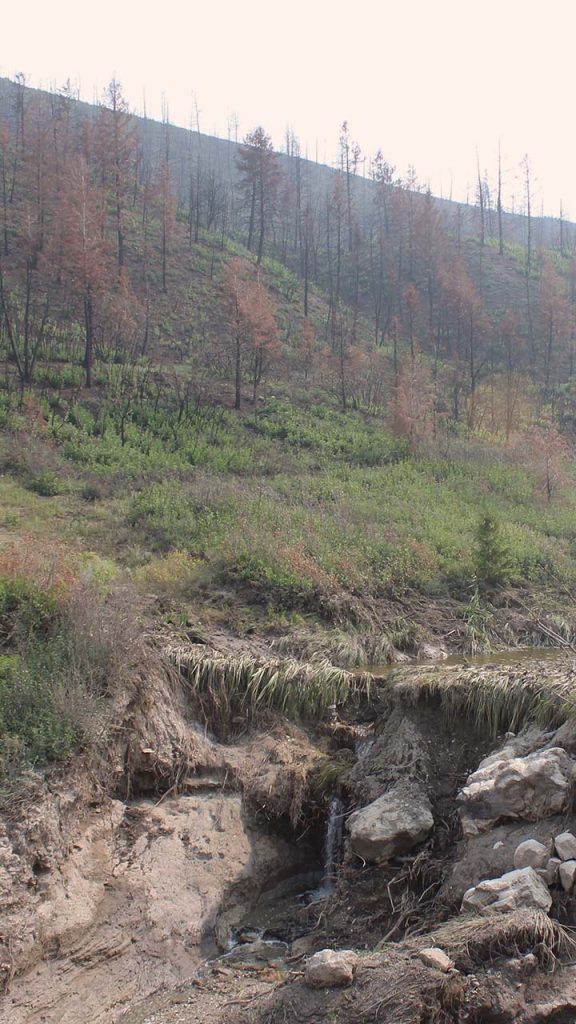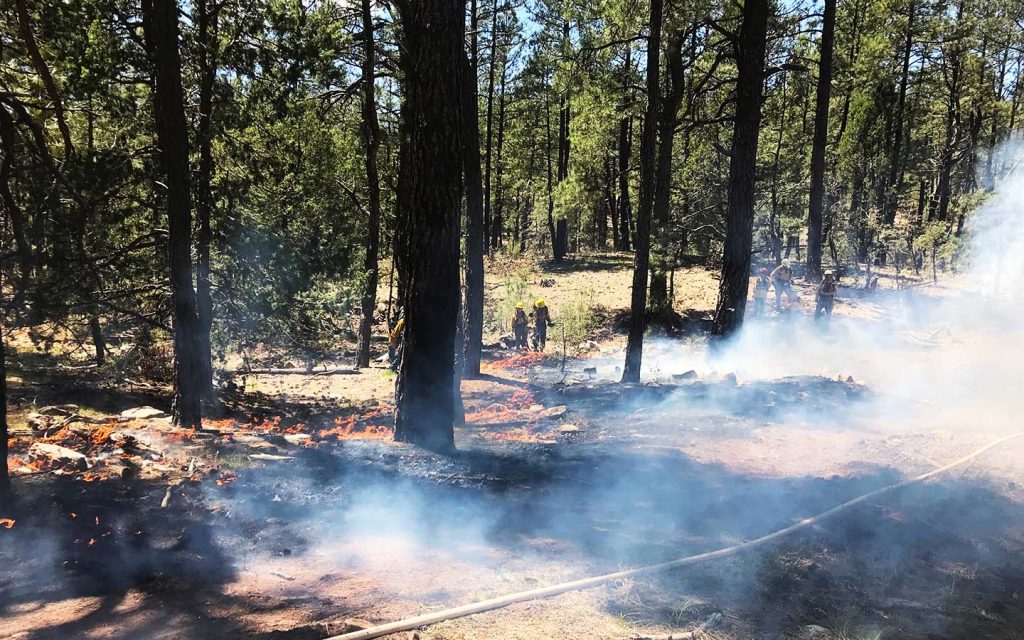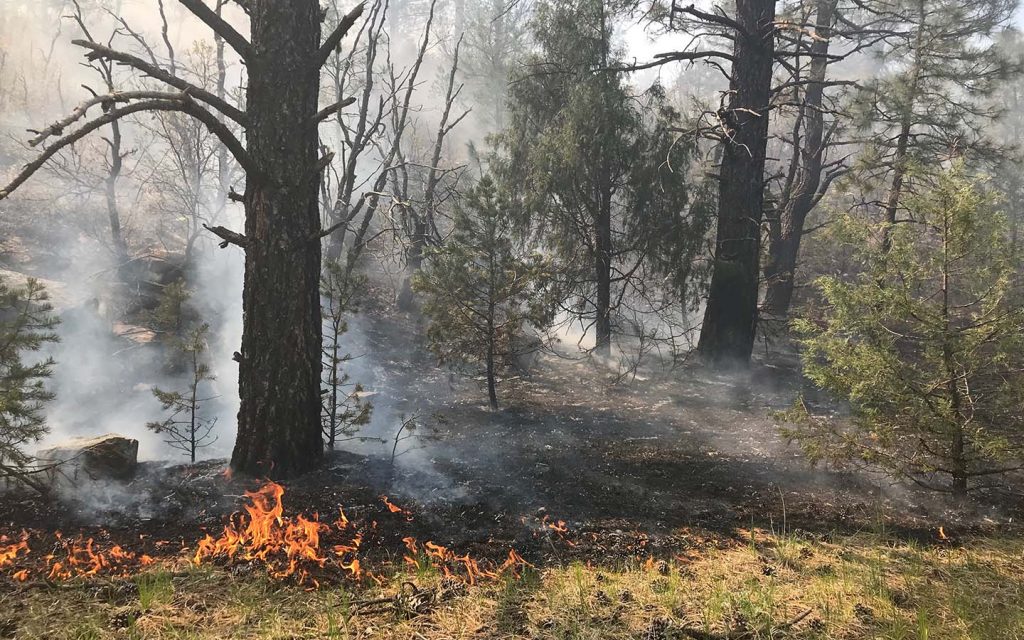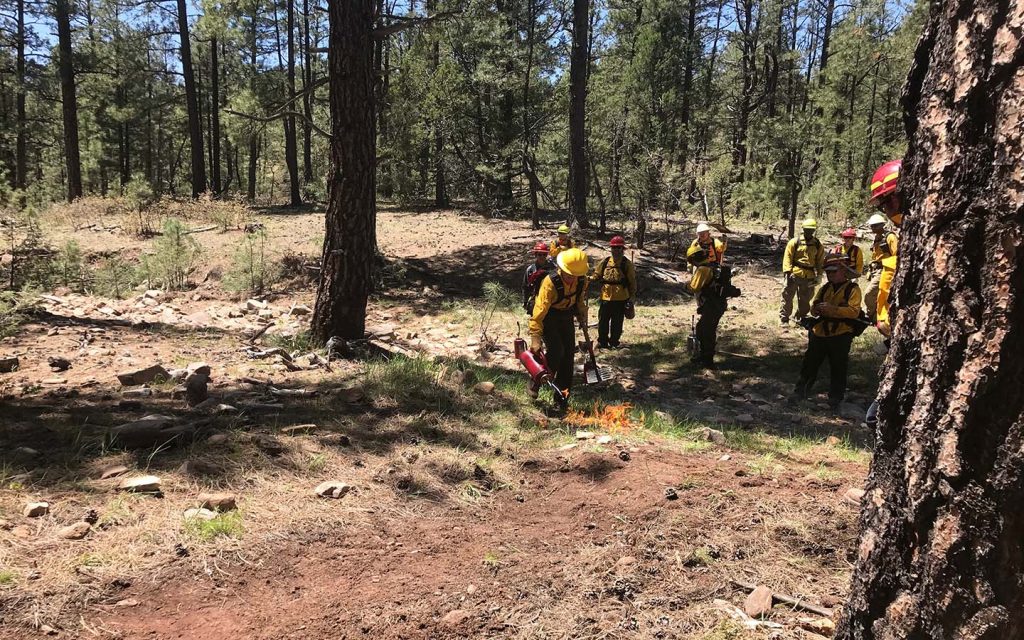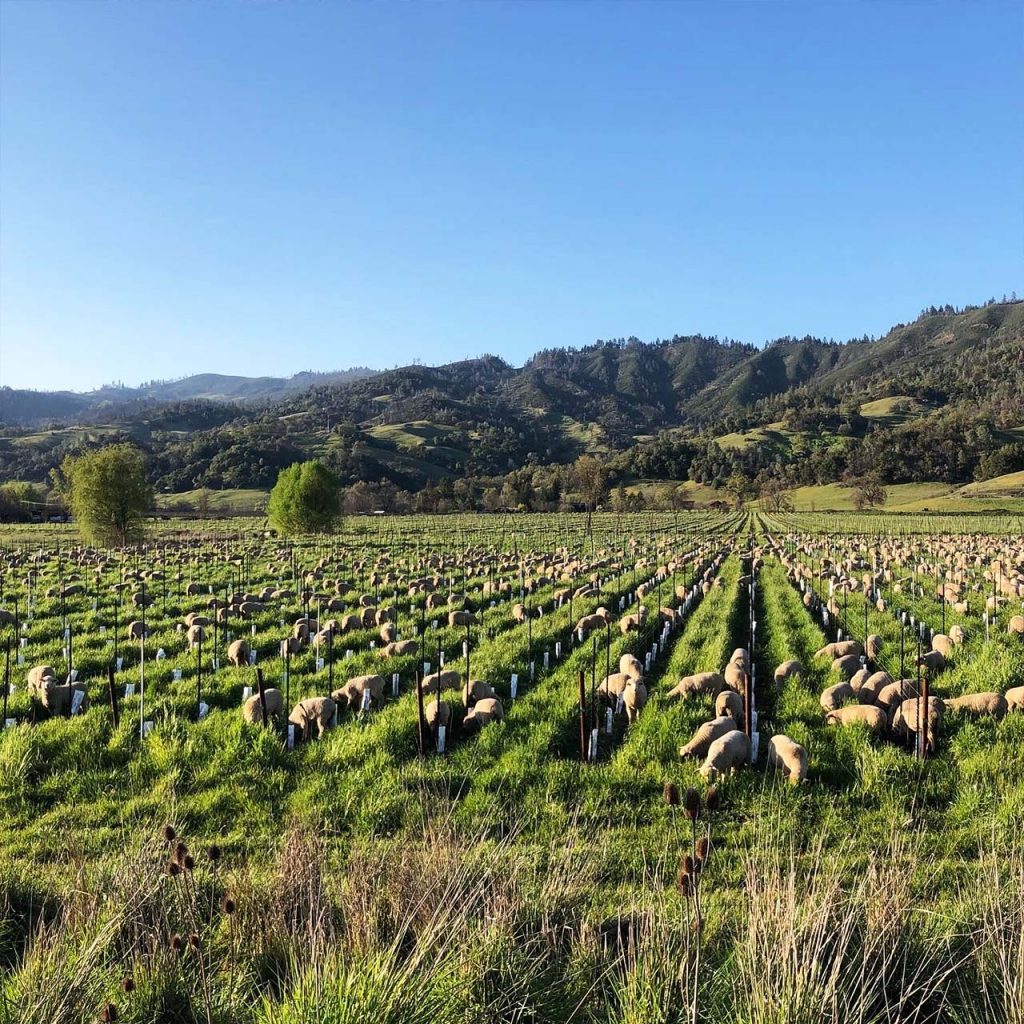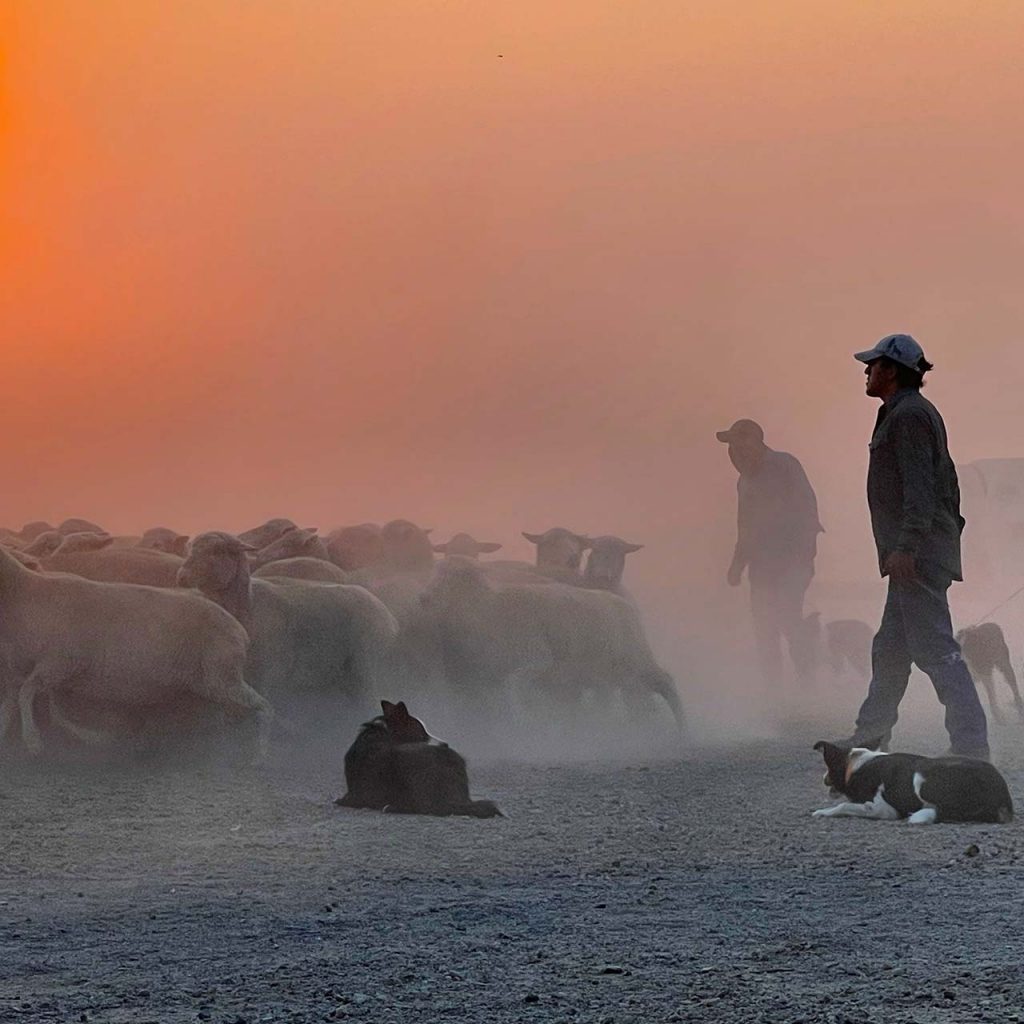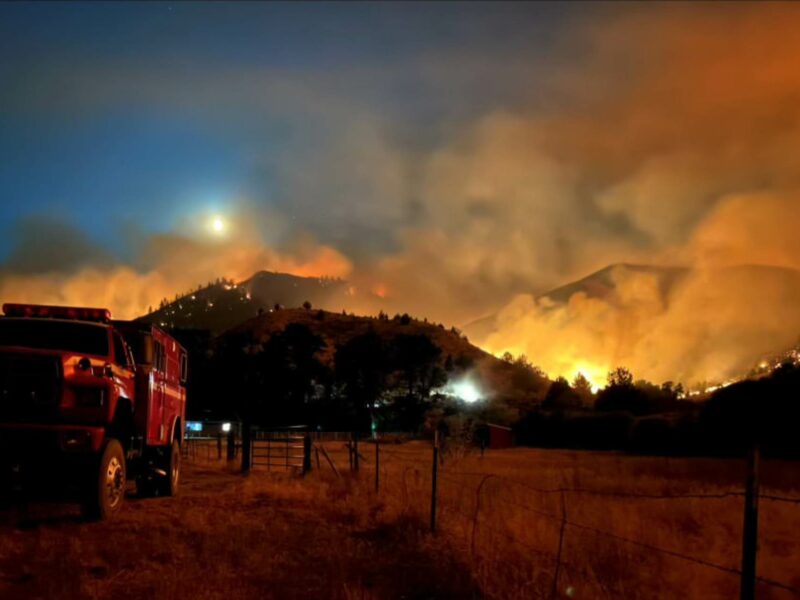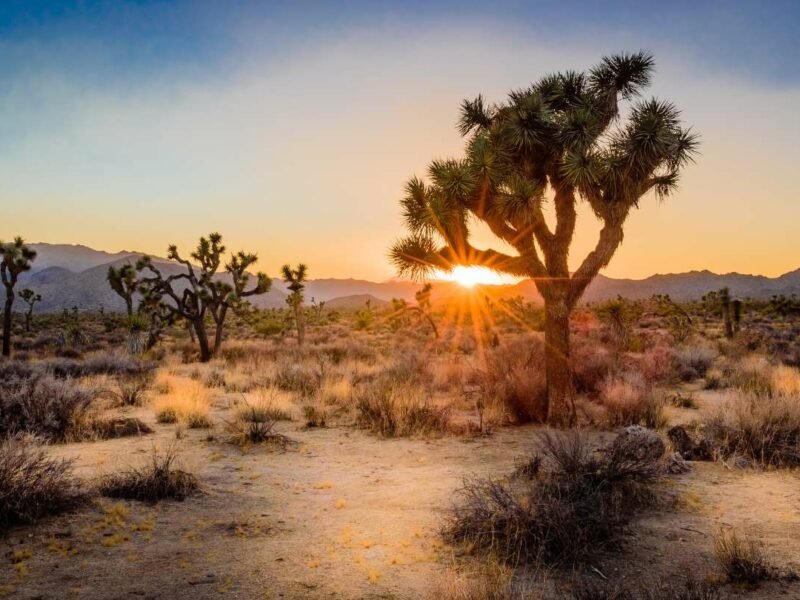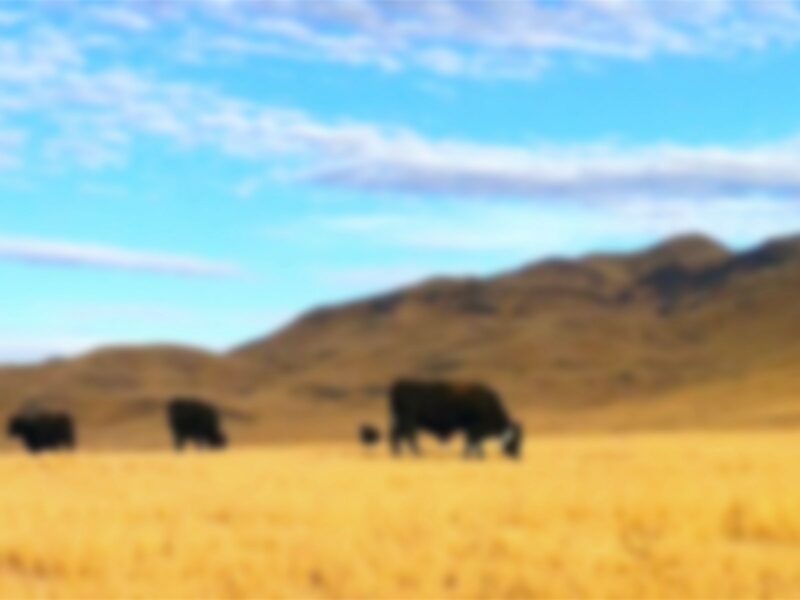Standing on a ridgeline of healthy spruce and fir in Montana, the forest understory uncluttered by deadfall, Mark Kossler looks west toward the Tobacco Root Mountains barely visible behind a veil of thickening smoke. With a herd of Ted Turner’s bison spread out below him on the Flying D Ranch, Kossler wipes sweat off his brow. The apocalyptic dusk, tinged purple, is the product of some of the biggest wildfires raging in modern American history, casting a pall that has drifted in from hundreds of miles away, affecting the hue of sunsets as far as Minneapolis and Chicago.
Some 90% of the West at this moment is clenched in the grip of a megadrought. Out in southern Oregon, the Bootleg Fire has already etched a scorching path. In neighboring California, the Dixie Fire loomed as the biggest in the country. Eight of the ten largest fires ever documented in the Golden State’s 171-year-old history have happened in the last decade alone. Rapidly, the 2021 Dixie was on a pace to surpass the size of the massive August Complex Fire (a convergence of several different giant blazes) that together burned 1,033,648-acres just a year earlier.
During the summer of 2021, hundreds of conflagrations were active simultaneously on millions of acres in 12 states. All were headlined by human evacuations and thousands of destroyed structures, and backdropped by water shortages leaving reservoirs bone dry, record-shattering heat, and livestock and crop losses putting many agrarians on the brink of economic disaster. In Montana, the most formidable fire was actually a giant prairie conflagration that swelled across about 200,000 acres. Together, all of these are powerful portents, scientists say, of a climate that is warming, signaling the arrival of a “new normal” of uncertainty that has made the old ways of plotting a course forward seem obsolete.
This series of photographs of the devastation of the 2020 Pine Gulch Fire on High Lonesome Ranch in Garfield County, Colorado, was taken in summer 2021. It clearly shows the impact of a high-intensity fire on entire watersheds. Photos by Lesli Allison.
Mark Kossler can tell you a lot about fires. As the general manager of Turner’s dozen and a half ranches in the West, he and colleagues have fended off fires, taken action to prevent them, and dealt with blazes that got away. His contemporaries in the Southeastern U.S. have also lit prescribed burns to enhance the restoration of longleaf pine and wiregrass ecosystems on Turner holdings.
Involved with ag all his life, Kossler expresses deep sympathy for cattle, sheep and fiber producers left reeling. One thing he makes clear from the very start is that the absolute worst time to ponder the rhyme and reason of flames is after the fact. In the aftermath of an inferno, he says, it is actually better to be thinking about preparedness for those fires yet to come that are inevitable rather than dwell on recriminations.
From indigenous knowledge forged by fire over millennia to the present, he says that fire, like water, is an earthly element there to be harnessed. When approached with eyes wide open, it can even help modern land stewards stay in the black.
More Americans than ever before are dwelling in the fire zone, more commonly called the “wildland-urban interface” (WUI). In the public-land-rich West, almost seven of every 10 dollars in the US Forest Service’s multi-billion-dollar operating budget is consumed by firefighting costs, the vast majority aimed at the WUI. This siphons away dollars that could be directed toward critical field operations, including, ironically, the agency’s ability to strategically use livestock and other tools for achieving fuel reduction.
Why is the WUI so problematic? The trendlines are stunning. Between 1990 and 2010, the number of new houses built in the WUI topped 40 million, representing 41 percent growth. In many areas of the West the percentage is much higher, notes a 2018 study led by Volker Radeloff published in the Proceedings of the National Academy of Sciences.
Sobering is that within the perimeter of recent wildfires there were more than 100,000 new houses, and the pattern is only accelerating. “When houses are built close to forests or other types of natural vegetation, they pose two problems related to wildfires. First, there will be more wildfires due to human ignitions,” the authors write. “Second, wildfires that occur will pose a greater risk to lives and homes, they will be hard to fight, and letting natural fires burn becomes impossible.”
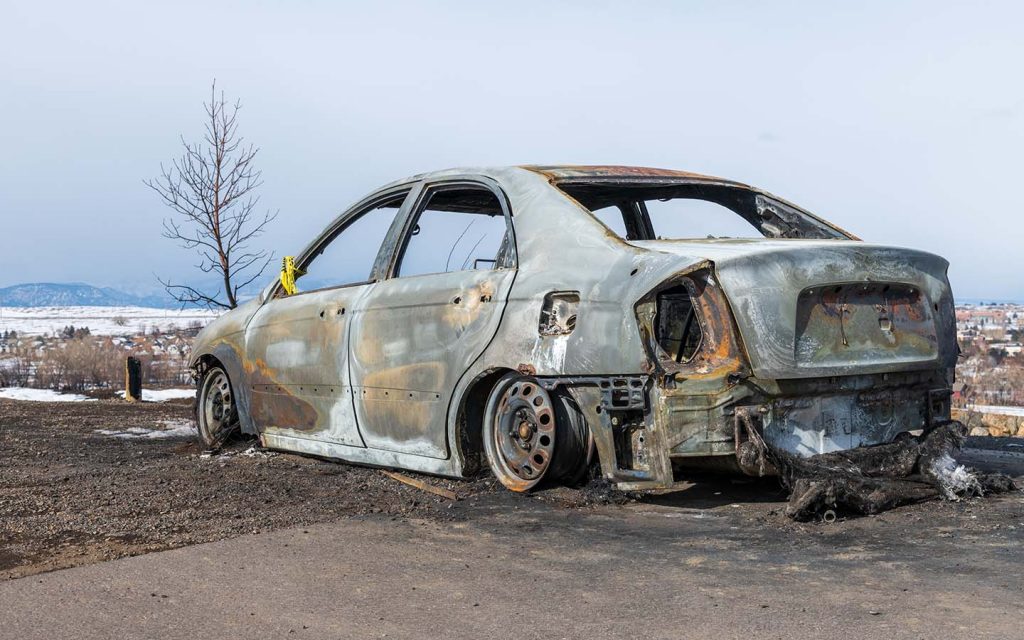
For agrarians, it has resulted in fragmented landscapes, posing deepening challenges for producers trying to operate at scale. Of all new WUI areas, 97% were caused by housing growth in sparsely settled areas, the study notes. More than inciting panic among ranchers, the annual prospect of another extended fire season is more often, these days, inciting frustration.
In the western U.S. the average fire season is 84 days longer than in the 1970s, notes Dr. Kimi Barrett with Headwaters Economics, and between 1985 and 2017, the number of fires classified as severe increased 700%. Since 2005, over 90,000 structures have been lost and nearly 2,000 communities have dealt with a wildfire of 100 acres or greater within two miles of town. In the 2018 Camp Fire in California, more than 18,000 structures were destroyed. In 2018, wildfires in the U.S. caused more than $24 billion in property loss.
Since 2000, 75% of western forests have become significantly drier, tied to winnowing snowpacks, less rain and earlier heat waves every year. By the middle of this century, additional fire suppression costs attributed to climate change alone are expected to reach $2 billion. Today, notes Barrett, fully half of the West’s population lives in the WUI, where 97% of all wildfires are human-caused.
50 %
of all people in the West live in the wildland-urban interface (WUI).
97 %
of all fires in the WUI are
human-caused.
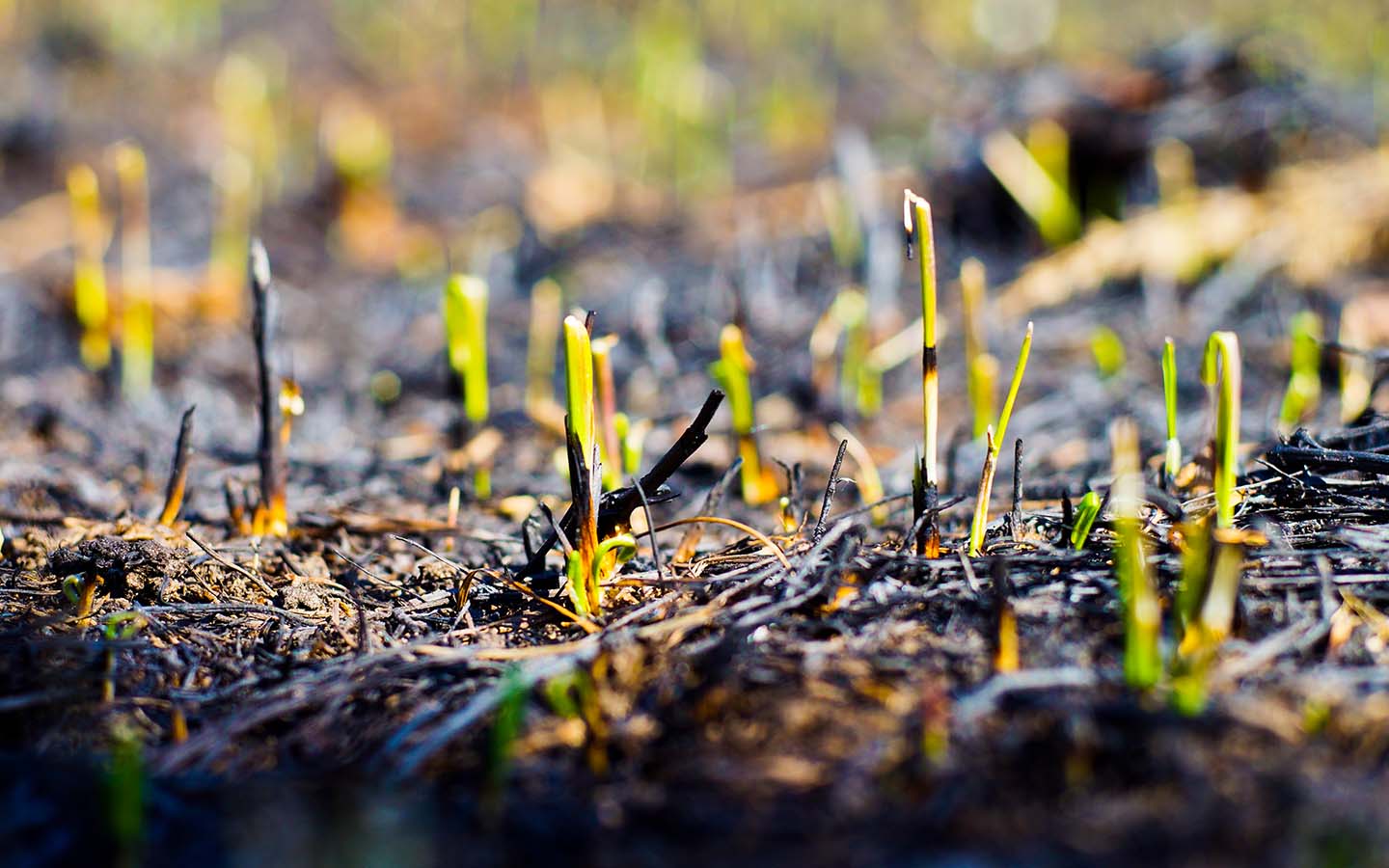
Between 1990 and 2010, the number of new houses built in the WUI topped 40 million, representing 41 percent growth.
There is widespread consensus that forest thinning is essential. It has won support on both sides of the political aisle, among rural people and those who look after public safety on the edge of towns. A number of bills now winding their way through Congress would, if passed and signed into law by President Biden, give federal land managers more discretion to swiftly greenlight forest thinning projects on national forests and BLM lands that have implications not only for grazing allotments but neighboring private properties and communities.
The efforts are not without controversy. A number of environmental groups claim these proposals are merely a ruse to provide more wood products to a timber industry still clinging to a mindset that developed in the last century but has become out of date with climate change. As a stern rebuttal, agency personnel, off the record, and private landowners who dwell in close proximity to public lands say green groups have become so litigious—challenging practically any proposed thinning project in court—that they have caused paralysis, resentment, and dangerously dense forests.
California rancher Dave Daley described the trauma that his family, which has been growing food for six generations, suffered when 2020’s Bear Fire, part of the August Complex of blazes, spread quickly into the Plumas National Forest where hundreds of his cows were on their summer grazing allotment. A significant percentage of them died or were injured. “It…destroyed our legacy,” he told reporter Tyne Morgan with U.S. Farm Report. “We’ve been taking cattle to the mountains of the Sierra Nevada since the 1880s, before there was even a National Forest Service…I consider myself an environmentalist. It doesn’t have to be an either or. I love the wild. I miss it. I go up there and it’s devastating.”
Daley appreciates the regenerative qualities of fire but it doesn’t ameliorate the transformation of a place ingrained in personal identity. “My granddaughter will never see that forest again the way it was. Neither will anyone else, at least not in my lifetime,” he told Morgan. “I’ve talked with people all over the country. They’ve said, ‘Well, it will look good next year, the grasses will come back.’ Until you’ve seen it, they don’t get the scope. They don’t get the disaster that occurred and how massive it is. And when you kill 150-year-old trees, we aren’t going to see it ever again.”
Not only that, the Daleys are among the last ranching families still standing in the Plumas. Nearly 50 other families have moved on, because they’ve gone bust or been unable to convince children to take over dealing with rising costs, enduring drought and fire, and navigating the bureaucratic red tape that separates their operations and the healthy forests they need to sustain them.
This points precisely to the heart of the complaint from ranchers—while fire is part of the natural process, today’s conflagrations, fueled by overgrown forests and ungrazed grasslands, burn super-hot, damaging the organic function of soils rather than enhancing it.
Not all fires are equal
Fire intensity is related to temperature: while an average forest floor surface fire burns at about 800°C, the intense fires that characterize the recent fire regime in the West can burn as hot as 1200°C. An extremely hot fire, fueled by thick dry vegetation accumulated on the ground, can be devastating. “It will cook the top part of ground and create a hard mineralized crust that is not as conducive to new plant growth or activating seeds in the soil or absorbing water,” Kossler says. If smaller, cooler prescribed fires can’t be utilized then it’s better to have smaller natural blazes that function as firebreaks. “Where we’ve been successful with prescribed burns and allowing smaller fires to burn on some of our properties, trees like aspen and ponderosa pine have been stimulated. Plants have jumped back up and it has benefitted everything from insects to large ungulates. Fire can be a catalyst for biodiversity.”
Shane Doyle enthusiastically agrees with Kossler. “Most Americans live in cities and suburbs, and they treat fire as if it’s this menacing ‘other’ thing that kind of descends on us and means us harm, but that’s not how indigenous people view it. Fire’s been part of our culture,” says Doyle, a paleo-ethno-archaeologist and member of the Crow Nation in Montana. “Fire has been a life force that’s been part of us, lived side by side. And when you approach it that way, you understand how it is related to so many other things and across longer time periods than just the present.”
In the oral traditions of the Crow, and similarly in other tribes, Doyle says fire was used as a tool to ensure animals and plants would be in certain places. If fires were lit on the prairie in early spring, for instance, and then the burned ground was nurtured by snow and rain, the sprouting new grass would attract bison and elk.
“Fire has been a life force that’s been part of us, lived side by side.”
Shane Doyle
Tantalizing new research shows how ancestors of today’s Jemez Pueblo in the Jemez Mountains of northern New Mexico—known as the Hemish people—used fire to create defensible spaces and fire resilient communities. A brand new multi-author study led by researcher Christopher Roos notes that the Jemez, many centuries ago, were already dealing with fire-related issues that today are relevant to the “wildland-urban interface” where millions dwell today.
“In the fire-prone, dry conifer forests of western North America, Native American settlements apparently existed in WUI-like conditions since the adoption of agriculture and the emergence of village life,” the researchers note.
The study also involved conversations and information-sharing with members of the Hopi, White Mountain Apache and Zuni tribes, leading to conclusions that indigenous people in the desert Southwest knew how to live in compatibility with forests where wildfires were a regular occurrence. Researchers note that indigenous people co-existed with fire in their own working landscape and recognized positive benefits of both fire and smoke.
“Reshaping western United States culture by learning from indigenous cultural values may be critical for building adaptive and transformative resilience in modern communities,” the authors write. Two adaptive behaviors were identified that made communities in the ancient WUI more successful in dealing with fire. First, they engaged in intensive wood collecting and forest thinning. Second, they employed patchwork intentional ignition of fires to reduce fuel hazards.
Today, an entity called the Indigenous Peoples Burning Network has gained traction. It sprang from a collaboration between the Hoopa, Karuk and Yurok tribes in northern California and the Fire Learning Network, a partnership that includes the Forest Service and The Nature Conservancy. A touchstone research paper titled “Indigenous Fire Management: Solving California’s Catastrophic Drought and Wildfire Problems” was delivered at a conference hosted by San Jose State University. “When settlers from [western Europe] came, they clear cut hundreds of square miles of forests, then when these forest grew back over decades, all of the trees competed for space, acting as thick fuel loads for fires like we see today,” writes Taylor Lane and three co-authors. “Along with the fact that there were no more Indigenous people to manicure the forests, it has now become the main issue of why our forest fires are getting so massive.”
Kossler says there is much to be learned from indigenous knowledge in New Mexico. At the Ladder Ranch southwest of Truth or Consequences, extensive archaeological research into Mimbres culture suggests sophisticated use of fire. Not far from the Jemez Mountains, Ted Turner’s managers have employed forest thinning and prescribed burning to restore some semblance of natural forest and grassland ecotypes on 560,000-acre Vermejo Park Ranch. Some 400,000 acres of the ranch is categorized as timber, but for more than a century the forest was high-graded, meaning that the largest Ponderosa pine were logged, leaving behind a dense concentration of other trees that were of poor quality because of crowding. “Ted’s strategy was to go in there and try to reverse the unhealthy conditions that had taken hold,” Kossler says.
“It’s a long term play,” Kossler says, noting that The Nature Conservancy with involvement from indigenous fire experts have used Turner’s fire-mitigation plans as demonstration projects for other landowners. After thinning has occurred, the remaining standing forest is subjected to prescribed burns to clear out woody vegetation, which is necessary to keep fire danger down. On a couple of occasions, prescribed burns were fanned by winds and spread to adjacent lands. “Everyone gives you praise and slaps you on the back until one gets away,” Kossler says.
A toothed tool in the fire fight
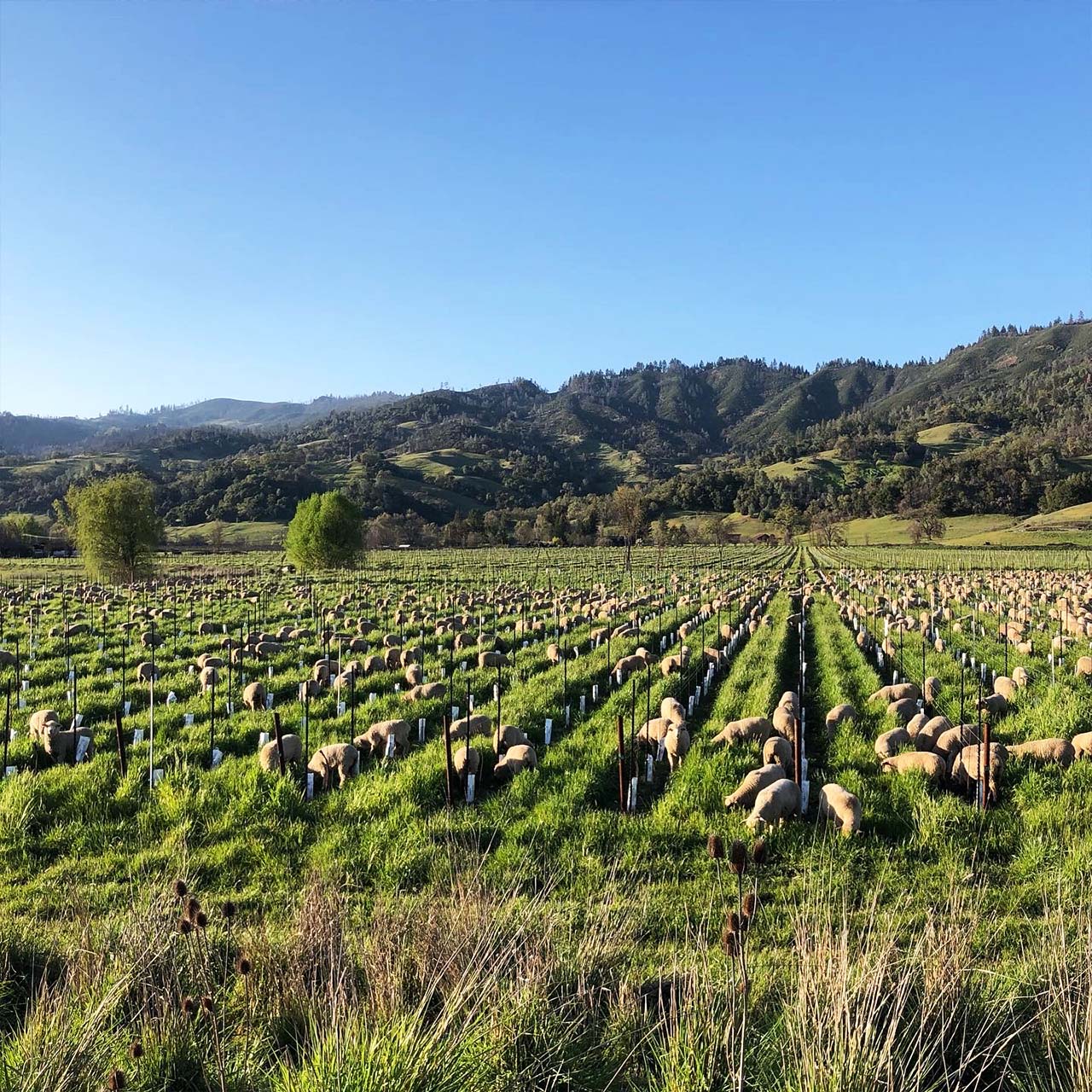
Ranchers are at the helm of a highly cost-effective tool to reduce fuel loads.
That tool is called grazing.
In California and the Pacific Northwest, winter and spring rainstorms coming in off the Pacific are a mixed blessing. They bring relief from drought in the near term, but when they result in lush grass growth which is followed by a dry summer, that creates an abundance of highly flammable vegetation on the landscape. Then, these grasslands need to be trimmed to create defensible spaces.
The Headwaters Economics study notes that wildfire suppression costs have doubled in recent years, and are more than ten times greater when homes are at risk.
Yet ranchers are at the helm of a highly cost-effective tool to reduce fuel loads. That tool is called grazing.
More and more, government agencies, including fire departments, have realized the value of enlisting sheep or cattle producers that can truck their animals to locations where ground cover “ladder fuels” like grass and shrubs need mowing. The ranchers themselves could use the forage, and their animals, unlike mechanical mowers, don’t throw off sparks that could accidentally start a blaze. Strategic deployment has yielded positive results, especially in the wildland-urban interface. Vineyard operators are increasingly partnering with livestock producers for the service. A valuable co-benefit is noxious weed control. In the wine country of Sonoma County, where the housing density, and thus the fire risk to property, has increased at a staggering pace in the past two decades, the University of California Ag Extension created a new online service called match.graze where landowners seeking fuel reduction can enlist ranchers.
That niche, called “target grazing,” is one that Jaime Irwin, her husband Robert and their family are filling. Their company, Kaos Sheep Outfit, based in Lake County, California, has been enlisted by local towns, fire departments, land trusts, watershed protection groups, vineyards, local airports and homeowners. Their flocks have been chomping grass and forbs primarily between Interstate 5 and US Highway 101 close to the Pacific Coast.
Kaos Sheep Outfit contract grazes among vineyards, woodlands and vacant lots in the wildland-urban interface (WUI) in northern California, where more mobile teeth are desperately needed to reduce the vegetation that is fueling increasingly dangerous and costly fires. Photos courtesy of Jaime Irwin.
“When I think about fire, I also think about the disconnect that exists between people who use water and don’t know where their water comes from. Beyond restrictions on watering their lawn, they don’t understand what the consequences are of a drought on people who make their living from the land,” Irwin says.
Early in the 2021 fire season, Irwin spoke with the state of California about making her services available on state land near a community, knowing there was not only a fuel problem but that noxious weeds were spreading, too. “This place had starthistle chest high and was impossible to walk through.” It took a wildlife biologist with the BLM weighing in to get the state to act, she explained. “I think there’s so much frustration because of the bureaucratic red tape we have to navigate. What’s really needed is faster decision-making so that we can work proactively at fire prevention instead of reacting haphazardly when fire breaks out.”
Nurturing natural resilience
Some 30 years ago, Ted Turner worked voluntarily with The Nature Conservancy to attach what was then one of the largest-ever conservation easements to the deed of a ranch—the 113,000-acre Flying D just outside of Bozeman, when an outbreak of spruce budworm showed up in the timber. Turner worked with ecologists from TNC to put together a strategy for forest thinning—careful strategic removal of trees to create better conditions for not only sabotaging the spruce budworm invasion but preventing a hot scarifying wildfire. It has worked on both counts, according to Kossler. Opening up the canopy and allowing sunlight to reach the understory also has benefitted native plants and yielded better forage for wild elk, mule deer and other native species.
Given the reality of the climate, it’s not a matter of whether to tinker or not, Kossler says, but how to do it intelligently: essentially, where possible, mimicking nature herself.
Decades ago when he went to college to study agriculture, Kossler says the emphasis was on what he calls “additive agriculture.” Higher yields were the result of constantly adjusting inputs and chasing slight market fluctuations, rather than heeding what nature was telling him. “I’ve learned to have a fundamental appreciation for soil biology and trying to understand the synergy that springs from it with animals and plants. That holistic view begins with protecting the soil and, if you get that wrong, the system stops functioning.”
Massive fires that scarify soils are an indication of a system that is “out of whack,” he says, and more important than having an impetuous response is heeding what those on the ground are sensitive to—the subtle nuances of how forests and grasses are responding to climate change.
“Anybody of a certain age remembers stories about the Dust Bowl and other major drought events. Climate change isn’t like flipping a switch for things to suddenly be one way or another. Adaptation is going to involve modifying our thinking in response to changing conditions,” Kossler says while standing amid a thinned, healthy forest on the Flying D Ranch and surveying bison that unknowingly serve double duty as fire prevention specialists.
Climate change isn’t like flipping a switch for things to suddenly be one way or another. Adaptation is going to involve modifying our thinking in response to changing conditions.
Mark Kossler
“What we are trying to do is help nurture natural resilience in the land because after we get through this megadrought—and we will—our soils and grasslands and forests can bounce back,” Kossler says. When nature bounces back, he adds, so, too, can communities.
